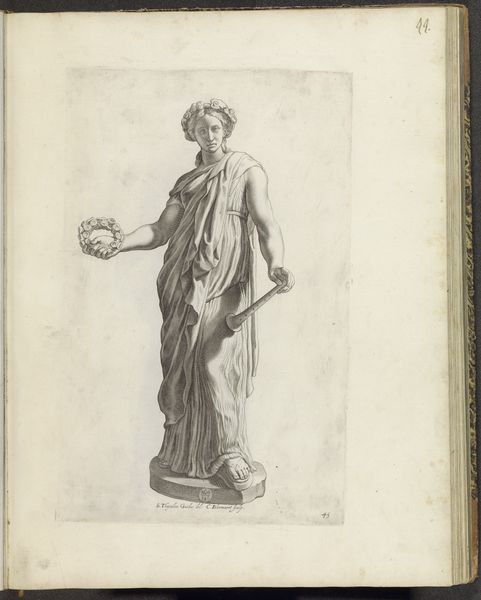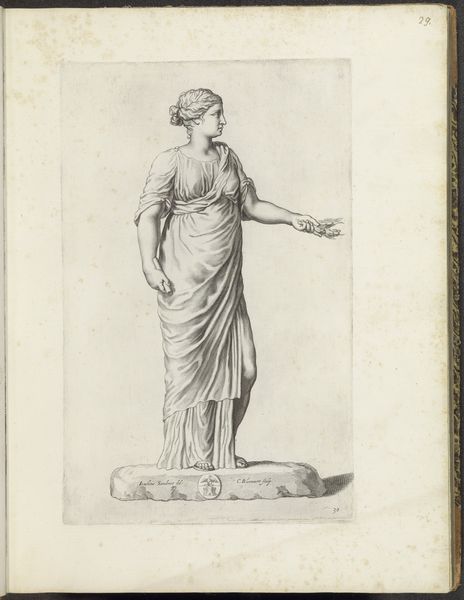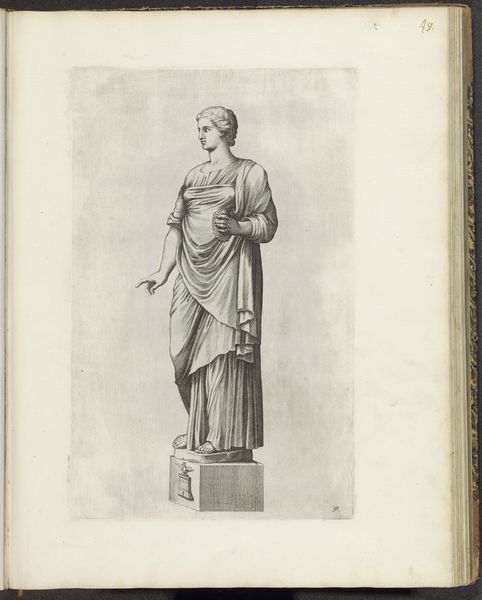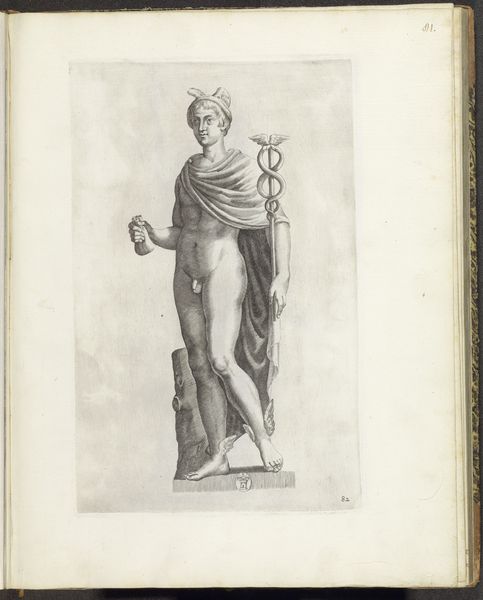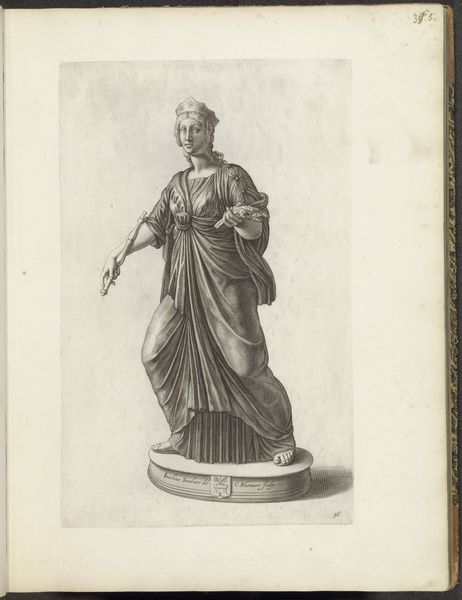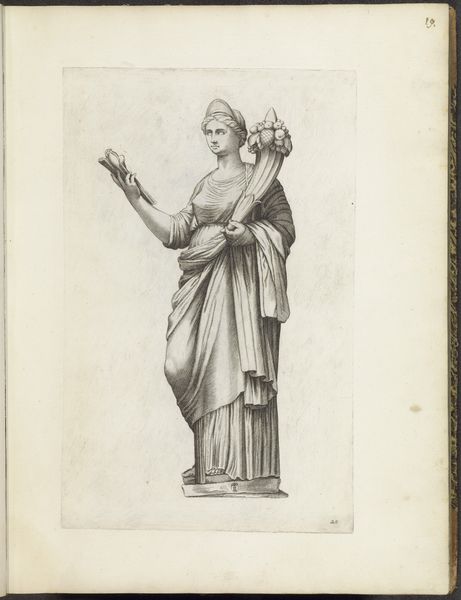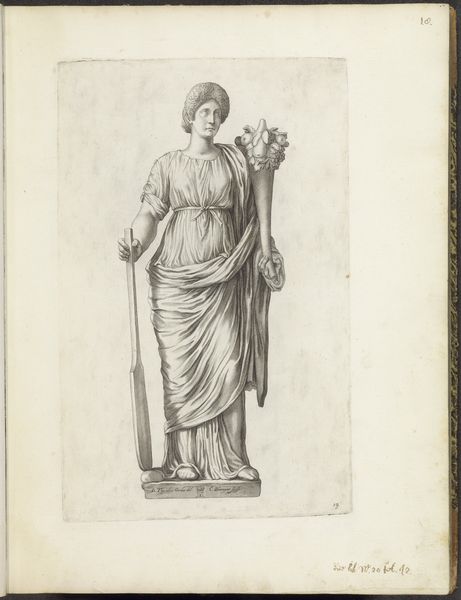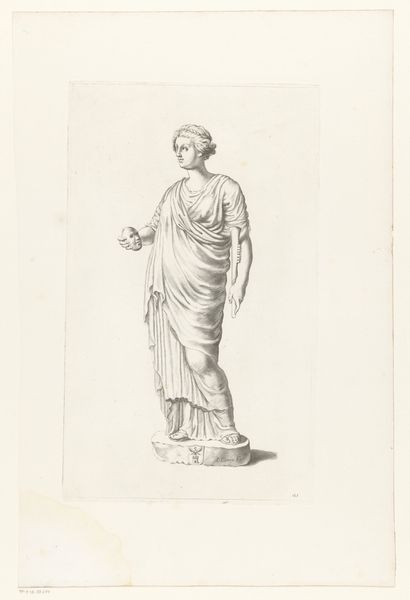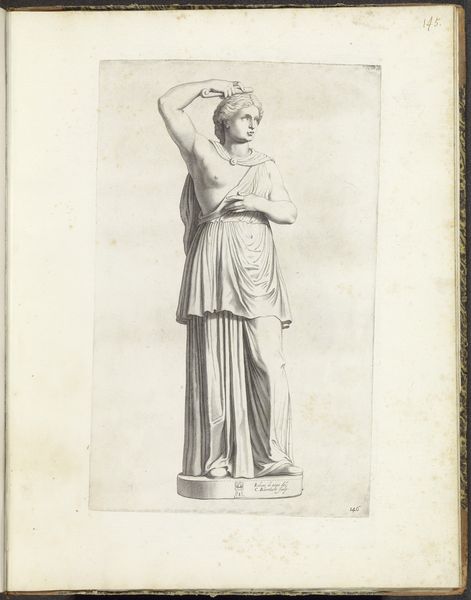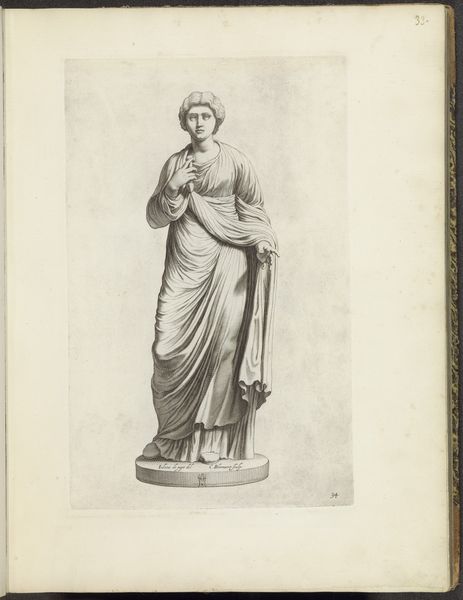
drawing, print, etching, sculpture, marble, engraving
#
portrait
#
drawing
#
baroque
# print
#
etching
#
pencil sketch
#
classical-realism
#
figuration
#
form
#
romanesque
#
coloured pencil
#
sculpture
#
line
#
academic-art
#
marble
#
engraving
Dimensions: height 370 mm, width 230 mm
Copyright: Rijks Museum: Open Domain
Curator: This delicate rendering depicts a sculpture of a woman holding a flower. It’s an etching, made sometime between 1636 and 1647, after an earlier piece by Cornelis Bloemaert. You can see it here in the Rijksmuseum’s collection. What strikes you about it? Editor: Immediately, I'm drawn to its serene quality. The subject is classical in form, but there's a fragility conveyed by the fine lines. She looks both powerful and vulnerable. What does the flower symbolize, I wonder, in this particular portrayal? Curator: The flower in her hand, I suspect, has layered significance. Flowers, throughout art history, can represent youth, beauty, fleeting life, or even virtue, depending on the context. Her serene expression and draped clothing add to her image, invoking classical sculptures of goddesses or muses. This pose suggests chastity but can be contradicted by holding up a phallic symbol like flowers at times. It must be remembered though, it all depends on other contextual symbols, like that of fruit, which may or may not reinforce carnal desire or temptation and may change its meanings with each new symbol or the omission of expected symbols in relation to its subject or person being rendered. Editor: It’s fascinating how those symbols play into a broader cultural understanding of women at the time. Bloemaert, in recreating the female form in classical imagery, taps into prevailing social expectations. Her representation is chaste but also feels slightly distant. Curator: These images provided moral instruction, reinforcing societal norms regarding feminine virtue. They echoe religious views but use classicism in a manner that invites many views on this image and invites us to explore both internal, and external societal views, from that time period. Editor: Agreed, and I think that historical lens helps us critically consider the piece, both its aesthetic merit and the social commentary it subtly offers about women and how to contextualize gender in our time. Curator: Precisely. The way the artist has adapted visual vocabularies, weaving together those different elements and creating a cultural discourse from the old. Editor: It is incredible how enduring the weight and nuance can be from cultural expressions and imagery!
Comments
No comments
Be the first to comment and join the conversation on the ultimate creative platform.

